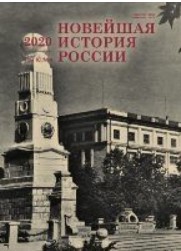Коммунистическая партия большевиков как советский социальный лифт в условиях новой экономической политики
Communist Party of Bolsheviks as a Soviet Social Elevator in the Context of the New Economic Policy
Author(s): T. I. Morozova, V. I. ShishkinSubject(s): Economic history, Political history, Economic policy, Government/Political systems, Politics and society, History of Communism
Published by: Издательство Исторического факультета СПбГУ
Keywords: New Economic Policy; Communist party; party leadership; social elevator; mobility; nomenclature system; elite;
Summary/Abstract: The authors analyze and interpret the processes that occurred during the New Economic Policy (NEP) period in the Russian Communist Party (bolsheviks) (RCP(b)) — All-Union Communist Party (bolsheviks) (AUCP(b)) as a “social elevator” from the standpoint of the theory of social mobility. The article takes into account the achievements of national historiography and is based on a wide range of published and unpublished sources. The authors reveal conditions that the party leadership imposed on those who wanted to “enter” the elevator; the number and social composition of replacements; the mechanisms, instruments, and procedures used to carry out movements between floors, as well as the volume of these movements; the transformation of the party as a social elevator; and its impact on mobility in Soviet society. The authors conclude that, thanks to the mass recruitment of workers, the height of the party pyramid quickly increased, and its structure and profile became more complex, which increased the potential for internal mobility. The forced promotion of young Communists into leading party bodies and the expansion of the number of party committees artificially caused upward intra-party mobility and the formation of a new generation of middle-level elites. The use of the nomenklatura system for appointing to the upper floors of the party hierarchy completed the process of rebuilding the RCP(b) — AUCP(b) as a social elevator controlled by Stalin’s Central Committee. As a result, by the end of NEP, the party’s influence social stratification in Soviet society became decisive.
Journal: Новейшая история России
- Issue Year: 10/2020
- Issue No: 33
- Page Range: 902-932
- Page Count: 31
- Language: Russian

